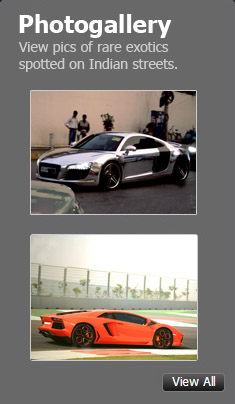News
Kia Syros 1.0 Turbo DCT: City and highway drive review including NVH
It has the same engine as the Hyundai Venue and Kia Sonet, and its ARAI-certified fuel efficiency is 17.68 kmpl.
BHPian Omkar recently shared this with other enthusiasts:
998cc turbo-petrol engine develops 118 BHP @ 6,000 rpm & 172 Nm @ 1,500-4,000 rpm:

During the media drive, we drove the diesel version of the Syros, and now, we finally got our hands on the turbo-petrol.
Kia Syros Turbo Petrol Variants
Kia is offering a 7-speed DCT as an option (apart from a 6-speed MT) with the Syros 1.0L turbo-petrol.
The DCT is available in 4 variants:
- HTK+ (Rs. 13.10 lakh)
- HTX (Rs. 14.60 lakh)
- HTX+ (Rs. 16.00 lakh)
- HTX+ (O) (Rs. 16.80 lakh).
The 6-speed MT:
It is also available in 4 variants, but it misses out on the top 2 variants:
- HTK (Rs. 9.50 lakh)
- HTK (O) (Rs. 10.30 lakh)
- HTK+ (Rs. 11.80 lakh)
- HTX (Rs. 13.30 lakh)
The engine has the same tune as the Hyundai Venue and the Kia Sonet. It’s worth noting that the Syros is heavier than the Sonet and hence, the 1.2-litre naturally aspirated engine would’ve most definitely felt underpowered. Coming back to this 1.0-litre turbocharged engine, it’s a refined unit overall, but you’ll still be aware that it’s a 3-cylinder unit. At idle, you can feel the vibrations on the steering wheel and the pedals.
Take your foot off the brake pedal, and the Syros creeps forward smoothly without any throttle input. I drove the Syros in some heavy Mumbai traffic and realised that you have to be gentle with the throttle for a smooth drive in bumper-to-bumper situations. The throttle response is sharp, and due to the initial turbo lag, it takes some time to get used to. While driving around in the city, the turbo-petrol offers good power. You can keep up with the traffic and even make those quick overtakes effortlessly.
Out on the highway, you can stretch the legs of the Syros. The mid-range is punchy as you’d expect from a turbo-petrol engine. Overtaking isn’t a problem on the highway. You can always use the paddle shifters to downshift manually and execute quick overtakes. Even in terms of cruising, the engine spins at a relaxed ~2,000 rpm at 100 km/h and ~2,500 rpm at 120 km/h. The transmission's kickdown response is average, not super quick. Once in the powerband, the engine responds much better.

The shifts of the 7-speed DCT are smooth. It is upshift-friendly, and sometimes takes a second to respond, but overall, it’s a good gearbox. In the city, at crawling speeds, it tries to hold on to the second gear, which adds a small pause when you demand more power. There’s no manual mode in the gear selector. You have to use the paddle shifters to change gears manually. They’re responsive, and you can keep the engine on the boil when needed. Unfortunately, the gearbox will upshift on its own when you go past 6,000 rpm.
Driving Modes
Apart from the regular Normal driving mode, there are two more modes available in the Syros 1.0L DCT – Eco and Sport.
Eco Mode
Eco mode dulls the performance, but makes for a very smooth drive, which is perfect for the city. I preferred driving the Syros in Eco mode when in the City. There is sufficient power available to keep up with city traffic. You won’t need to engage the other modes often. The transmission shifts up early to maximise fuel economy. Eco mode works well on the highway too. It’s apt for cruising and works okay even while passing slower vehicles. Only on undivided highways will you need to shift to one of the other modes when you need to pass vehicles quickly. Or when you are in the mood for some fun.
Sport Mode
Sport mode sharpens everything up. Throttle response is quicker, and the transmission holds on to a gear for a little longer. In the city, this mode can get a bit busy & feel jerky in stop-go traffic. It’s a joy on the open road though. You can really get a move on if you are an enthusiastic driver. Sport mode also gives you superior engine braking.
Noise, Vibration & Harshness (NVH)
The overall refinement of the Syros is good, but you’re always reminded that there’s a 3-cylinder engine under the bonnet. The engine noise is kept in check, but the vibrations are felt on the steering wheel and pedals while idling. At high revs, the engine sounded strained to me, and I preferred driving it sedately.
No insulation under the bonnet, just like the diesel:

Mileage & Fuel economy
The ARAI-certified fuel efficiency of the Syros 1.0-litre turbo petrol is 18.2 km/l for the 6-speed MT and 17.68 km/l for the 7-speed DCT. Do note that the fuel efficiency of a turbo-petrol engine, along with a dual-clutch transmission, highly depends on the driving style. Owners of the Venue / Sonet 1.0L DCT have reported numbers ranging between 8-12 km/l while driving in the city. We’ll wait for some ownership reviews to get a better picture of the real-world fuel efficiency of the Syros.
The fuel tank capacity of the Syros is 45 litres and the engine is E20 compatible:

Check out BHPian comments for more insights and information.




 (1).jpg)









_0_0.jpeg)




